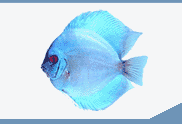

 |
||||||||||||
 |
||||||||||||
| Introduction to Freshwater Fish Parasites | ||||||
| Page 3 of 14 | Pages: 1 . 2 . 3 . 4 . 5 . 6 . 7 . 8 . 9 . 10 . 11 . 12 . 13 . 14 | |||||
Chilodonella Chilodonella is a ciliated protozoan that causes infected fish to secrete excessive mucus. Infected fish may flash and show similar signs of irritation. Many fish die when infestations become moderate (five to nine organisms per low power field on the microscope) to heavy (greater than ten organisms per low power field). Chilodonella is easily identified using a light microscope to examine scrapings of skin mucus or gill filaments.  Figure 3: An illustration of a Chilodonella ciliated protozoan.
Figure 3: An illustration of a Chilodonella ciliated protozoan.
It is a large, heart-shaped ciliate (60 to 80 m) with bands of cilia along the long axis of the organism ( Figure 3 ). The organism is easily recognized at 100X magnification. Chilodonella can be controlled with any of the chemicals listed in Table 1 , and one treatment is usually adequate. Chilodonella has been eliminated in tanks using recirculating water systems by maintaining 0.02% salt solution. Tetrahymena Tetrahymena is a protozoan commonly found living in organic debris at the bottom of an aquarium or vat. Tetrahymena is a teardrop-shaped ciliate ( Figure 4 ) that moves along the outside of the host. The presence of Tetrahymena on the body surface in low numbers (less than five organisms per low power field) is probably not significant. It is commonly found on dead material and is associated with high organic loads. Therefore, observing Tetrahymena on fish, which have been on the tank bottom, does not imply the parasite is the primary cause of death. One treatment of a chemical listed in Table 1 should be adequate for control.  Figure 4: An illustration of a Tetrahymena protozoan.
Figure 4: An illustration of a Tetrahymena protozoan.
Identification of Tetrahymena internally is a significant but untreatable problem. A common site of internal infection is the eye. Affected fish will have one or both eyes markedly enlarged (exophthalmia). Squash preparations made from fresh material reveal large numbers (=> 10 per low power field) of Tetrahymena associated with fluids in the eye. Fish infected with Tetrahymena internally should be removed from the collection and destroyed. Trichodina Trichodina is one of the most common ciliates present on the skin and gills of pond-reared fish. Low numbers (less than five organisms per low power field) are not harmful, but when fish are crowded or stressed, and water quality deteriorates, the parasite multiplies rapidly and causes serious damage. Typically, heavily infested fish do not eat well and lose condition. Weakened fish become susceptible to opportunistic bacterial pathogens in the water.  Figure 5 : An illustration of a Trichodina ciliates.
Figure 5 : An illustration of a Trichodina ciliates.
Trichodina can be observed on scrapings of skin mucus, fin, or on gill filaments. Its erratic darting movement and the presence of a circular, toothed disc within its body ( Figure 5 ) easily identify it. Trichodina can be controlled with any of the treatments from Table 1. One application should be sufficient. Correction of environmental problems is necessary for complete control. more ... |
 |
|||||
| About Us :: Message Board :: Chat | |||||
| Library :: Photo Gallery :: Links & Resources :: Breeders & Sponsors :: Merchandise | |||||
| Website designed by: EthanCote.com | � 2001-2004, SimplyDiscus.com. All Rights Reserved. | ||||